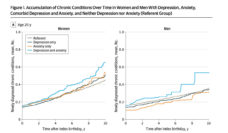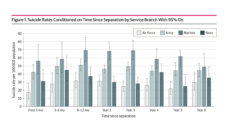In July 2022, the 988 Suicide and Crisis Lifeline was launched following a three-year joint effort by the U.S. Department of Health and Human Services (HHS), Federal Communications Commission (FCC), and the U.S. Department of Veterans Affairs (VA). This easy-to-remember, 3-digit number was designed to support access to 24/7 behavioral health crisis care, provide individuals with timely referrals to treatment, and reduce law enforcement response in behavioral health crises.
Because individuals with mental illness are vastly overrepresented in our nation’s criminal justice system, improved crisis response is imperative. 988 provides immediate, trauma-informed crisis intervention and support through call, text, or online chat. While one in ten calls will require in-person attention, the hope is that 988 crisis counselors can resolve most immediate needs and reduce reliance on in-person response.
While the federal government has recommended best practices for behavioral health crisis care through SAMHSA’s National Guidelines for Behavioral Health Crisis Care: A Best Practice Toolkit, these recommendations are clinically oriented. In fact, the word “public health” appears only twice in the 80-page document. For 988/crisis service programming to be successful and sustained, public health workers outside of the clinical realm will need to play a central role. Without guidance from federal, state, and local government, public health professionals outside of the mental health space do not understand how they can best support 988’s implementation. This could lead to duplication of efforts, a lack of unified messaging, and a missed opportunity to leverage existing infrastructure and support.
In 2022, the American Public Health Association (APHA) approved Public Health Actions to Support Implementation of the 988 and Crisis Lifeline (#LB 22-01). This policy statement offers concrete recommendations on the role that public health professionals might play in supporting 988/crisis service implementation. APHA’s mental health section is currently exploring how policy statement recommendations can be effectively rolled out by working directly with state affiliates. The policy statement’s recommendations are organized under three main domains: (1) evaluation and accountability; (2) policy and infrastructure development; and (3) assurance, public trust building, and communications.
Public health has the capacity and infrastructure to support the roll-out of essential crisis services for the nation.
Evaluation and accountability.
Public health officials at state and local levels under the Assistant Secretary for Health — such as the Office of Minority Health, Office of Population Affairs, Office of the Surgeon General, and Office on Women’s Health — can advocate for, access, interpret, and amplify public access data that indicate where the crisis system is working well and for whom. With a broad range of stakeholders, these kinds of public health offices, along with their advisory committees, working groups, and task forces are well-positioned to support public understanding of 988/crisis system data and identify next steps for addressing gaps in service.
Policy and infrastructure development.
Leaders in the nonprofit public health space, such as the National Action Alliance for Suicide Prevention, the World Health Organization, and American Public Health Association, can act as conveners, ensuring that 988 funding entities, legislative bodies, and policy proponents can seamlessly integrate 988 into cohesive collaborations with healthcare and non-medical entities, ensuring access to crisis care in settings where people live, work, and play. This may be particularly important for rural counties, where access to crisis services may be more limited. Further, anyone who works in public health can be a supportive advocate, calling on local, state and national government to use legislative authority, budgetary action, and influence to ensure adequate funding for statewide 988 and crisis response coverage.
Assurance, public trust building, and communications.
To build public trust, 988/crisis services need to recruit and retain a staffing pattern that is culturally and linguistically diverse, accurately reflecting populations to be served. To do this, 988/crisis workers need to be well-trained and well-supported. Public health professionals working and teaching in university settings can identify a pipeline of students well-suited to crisis work. With its focus on wellness, public health teachers and trainers can offer supportive strategies and resources to prevent workforce burnout and re-traumatization.
Public health has the capacity and infrastructure to support the roll-out of essential crisis services for the nation. Let’s think strategically about the role we can play.
Public Health Actions to Support Implementation of the 988 and Crisis Lifeline was sponsored by the Mental Health Section of APHA. We would like to acknowledge the authors of the policy statement: Bruce Crow, Kimberly Townsend, Andrea Fiero, erica hamilton, Carol Thornton, Kathryn Washington, Kerri Nickerson, Kyle McKinley, and Kristen Quinlan.
Follow the Intersectional Council Workgroup on Suicide Prevention for the American Public Health Association on Facebook and Instagram.
Photo via Getty Images
















